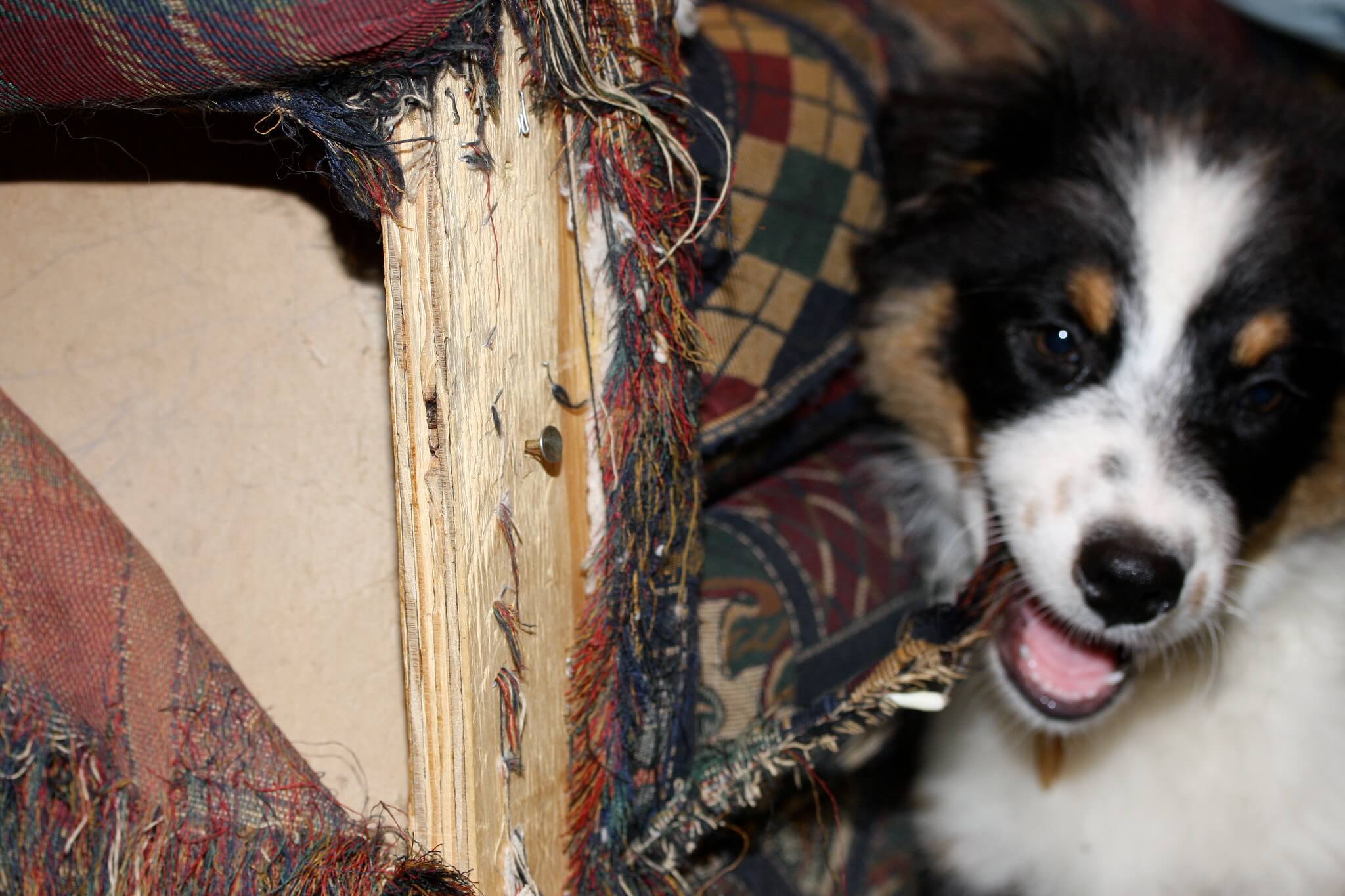How to Stop Your Dog From Chewing Furniture
Dogs are notorious for chewing habits, and furniture is frequently a target. While chewing can be destructive and annoying, it’s normal for dogs. To prevent and rectify this behavior, it’s crucial to understand the reasons behind chewing and take proactive steps. This article will explore why dogs chew furniture, ways to prevent it, and corrective measures to stop this behavior.
Understanding the Reasons Behind Chewing
Instinctual Chewing
Dogs have the instinct to chew to keep their teeth clean and healthy and relieve stress and boredom. It’s important to provide your dog with appropriate chew toys to fulfill this natural urge.
Separation Anxiety and Boredom
Dogs left alone for extended periods may chew on furniture due to separation anxiety or boredom. Ensure that your dog gets enough exercise and stimulation and has access to toys and distractions while you’re away.
Teething in Puppies

Puppies go through a teething stage where they chew to alleviate discomfort from growing new teeth. Providing chew toys can help redirect this behavior from the furniture.
Medical Issues
Medical conditions like joint pain, dental problems, or digestive issues can cause chewing behavior. If your dog is showing excessive chewing, take them to a veterinarian to rule out any underlying medical issues.
Prevention Techniques
Proper Exercise and Stimulation
Regular exercise and stimulation can prevent furniture chewing. Daily walks, games, and interactive toys can stimulate your dog physically and mentally.
Setting Boundaries and Rules
Setting clear boundaries and rules for your dog can prevent furniture chewing. Teach your dog what is appropriate to chew and what’s not to reduce the likelihood of furniture chewing.
Taste Deterrents
Taste deterrents can discourage furniture chewing. Apply these products to furniture to make it unappealing to chew.
Providing Chew Toys
Providing appropriate chew toys can redirect chewing behavior away from the furniture. Please ensure the toys are durable and the right size for your dog, and rotate them regularly.
Corrective Measures

Supervision and Redirection
Supervise your dog and redirect their chewing behavior to appropriate toys. If you catch your dog chewing on furniture, interrupt the behavior and redirect their attention to a chew toy.
Training and Positive Reinforcement
Training and positive reinforcement can help stop furniture chewing. Reward your dog for chewing on appropriate toys and reinforce good behavior. This will reinforce the desired behavior and discourage furniture chewing.
Addressing Behavioral or Medical Issues
If your dog’s chewing furniture is due to a behavioral or medical issue, addressing the issue can stop the behavior. A veterinarian can diagnose and treat any medical conditions, and a professional dog trainer can address any behavioral problems.
The Importance of Patience and Consistency
Patience
Stopping furniture chewing behavior takes time and patience. Be consistent in your efforts and keep going, even if progress is slow.
Consistency
Consistency is crucial to stopping furniture chewing behavior. Consistently supervise your dog, redirect their behavior, and provide positive reinforcement to reinforce the desired behavior and discourage furniture chewing.
Environmental Enrichment

Creating a Safe and Stimulating Environment
Creating a safe and stimulating environment can prevent furniture chewing. Provide plenty of toys, interactive puzzles, and opportunities for exploration and discovery.
Interactive Toys and Puzzles
Interactive toys and puzzles can keep your dog mentally stimulated and prevent boredom. These toys can stimulate and challenge your dog and redirect chewing behavior away from the furniture.
Hiding Toys and Treats
Hiding toys and treats around your home can allow your dog to explore and discover new things, preventing boredom and reducing furniture chewing.
Addressing Medical Issues
Importance of a veterinary check-up
If your dog shows excessive furniture chewing, it is vital to have a veterinary check-up to rule out any underlying medical conditions.
Common medical conditions that may cause furniture chewing
Common medical conditions that may cause furniture chewing include tooth or gum problems, dietary deficiencies, and allergies.
Treatment options for medical conditions
Treatment options for medical conditions that may cause furniture chewing to include medication, dietary changes, and surgery. Your veterinarian can help diagnose and treat any underlying medical conditions, and a professional dog trainer can help address any behavioral issues.
Conclusion
In conclusion, furniture chewing can be frustrating and destructive in dogs. Still, it is a behavior that can address with patience, consistency, and appropriate training and management techniques. By providing appropriate chew toys, correcting the behavior through supervision and redirection, and addressing any underlying behavioral or medical issues, you can help stop your dog from chewing furniture. Additionally, creating a safe and stimulating environment for your dog, maintaining a structured routine, and providing consistent positive reinforcement for good behavior can help prevent furniture chewing and promote good behavior in your dog.
You may also like
How to Potty Train a Puppy in 7 Steps







